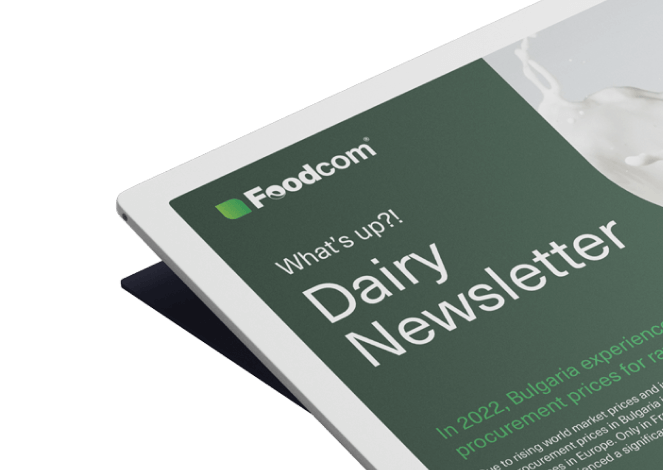- MSM is growing rapidly – the global market is increasing by 7–9% annually, driven by the trend toward natural supplementation.
- Versatile applications – from joint and skin health to veterinary medicine and cosmetics from within.
- Foodcom S.A. offers its own MSM – also available in a consumer version, in line with the clean label trend.
- DTC and e-commerce channels are accelerating the introduction of new formats and premium products.
- APAC is the growth leader, while North America is the largest market in terms of value.
In recent years, MSM has been gaining increasing recognition as a natural ingredient in dietary supplements, finding use in both human and animal supplementation. Its popularity is growing in response to demand for ingredients with a broad spectrum of effects – from joint and skin support to anti-inflammatory and antioxidant properties. MSM is part of the global ‘clean label’ and wellness trends, attracting the attention of brands looking for effective, well-tolerated and versatile solutions. 2025 is a time of marked acceleration for the MSM market – growing consumer awareness, the development of DTC channels and the diversification of applications mean that this ingredient is increasingly boldly entering the mainstream of modern supplementation.
Applications and market segmentation
MSM is an ingredient with a wide range of applications, used in both human supplements and animal health support products. Although its role is mainly focused on joint support and anti-inflammatory effects, applications in both segments vary in terms of form, audience and purpose of use.
Supplementation for humans
MSM (methylsulfonylmethane) is primarily used as a joint health booster with anti-inflammatory and antioxidant effects. Clinical studies and literature reviews suggest that MSM can alleviate symptoms of arthritis (pain, stiffness, swelling), support muscle recovery after exercise, improve skin condition and alleviate symptoms of seasonal allergies. In addition, MSM may boost the body’s immune system, although research on its effect on cancer prevention is still preliminary.
In response to growing consumer interest in natural supplementation, Foodcom S.A. has also introduced MSM in a direct-to-consumer version
👉 https://fdcm.eu/pl/products/msm/
Supplementation for animals
In veterinary medicine, MSM is most commonly used as an ingredient in formulations for pets, primarily dogs and horses, with anti-inflammatory and antioxidant effects. Quite a few comments and practical indications come from veterinarians, who recommend MSM primarily as a joint and mobility support. MSM also helps to improve hair and coat quality in animals, which has been confirmed in studies on kittens, among others – supplementation at a dose of 0.2 per cent of the diet improved coat quality and did not adversely affect growth, metabolism or the gut microbiome. Additionally, in poultry farming, MSM shows potential as a feed additive. It can support meat quality, improve water retention and influence the mineral profile and microbiota.
Global market dynamics (2024 – 1st half of 2025)
The global MSM market has been on a steady upward trend over the past several months, driven by growing interest in natural ingredients to support joint health, skin health and overall immunity. The use of MSM is gradually expanding beyond traditional formulas for athletes to include products targeting seniors, women and consumers who prefer preventative supplementation.
The value of the MSM market in 2023 was estimated – depending on the scope of the analysis – to be between USD 1.2bn and USD 3.2bn. The differences in the estimates are mainly due to the different coverage of the segments: some reports consider only human supplementation, while others extend the analysis to include veterinary, cosmetic or industrial uses. Regardless of the methodology adopted, all sources point to a stable market growth rate of 7-8% per year through to 2030.
MSM is also gaining from the increasing popularity of online sales channels and direct-to-consumer formulations, which allow for faster introduction of niche and personalised products. In turn, the development of multi-ingredient formulas – combining MSM with collagen, vitamin C or hyaluronic acid, among others – is increasing its presence in the portfolio of modern wellness and beauty brands.
Regional analysis of the MSM market (2024 – H1 2025)
The growth of the global MSM market has not been uniform. The growth rate, consumption structure and dominant applications vary significantly from region to region.
North America
North America, with the United States dominating, remains the largest market for MSM supplements, accounting for more than 40% of global revenue in the human-grade segment (ResearchAndMarkets). Consumers reach for MSM mainly in the context of supporting joint health, improving flexibility, reducing inflammation and as an ingredient in anti-aging formulas. Strong growth in direct-to-consumer (DTC) channels and the high popularity of wellness brands are enabling the rapid introduction of new formats – from capsules and powders to multi-ingredient blends with collagen, hyaluronic acid and vitamin C. MSM has also gained a foothold as a beauty ingredient, present in skin and hair supplements, further broadening its audience. The US market also leads in the number of registrations of MSM products in clean label and vegan forms.
Europe
In Europe, the MSM market is developing moderately, with an increasing focus on quality, regulatory compliance and supply chain transparency. The largest markets are Germany, France, Italy and the UK. MSM is keen to be used in health-promoting formulations, but higher regulatory barriers – especially in terms of ingredient approvals and health claims – are limiting the growth rate. European consumers show a clear preference for certified, natural and clinically tested products. In some countries (e.g. Germany, the Netherlands), MSM is also appearing in functional cosmetics and as an ingredient in dermocosmetics to support sensitive and atopic skin.
Asia Pacific (APAC)
The Asia-Pacific region is currently the fastest growing market for MSM, with a projected CAGR of 9.5% between 2024 and 2030 (DataIntelo). China, India, South Korea and Japan are the most significant contributors here. In these countries, MSM is gaining popularity both as a supplement to support joint and skin regeneration and as a phytotherapeutic ingredient in combination with traditional herbal formulas (e.g. Ayurveda, TCM). In India, MSM is also used in the feed sector (feed-grade), particularly in veterinary products for cattle, horses and poultry. The region is also a leader in the production of MSM raw materials – with a strong presence of local suppliers and exports to North America and Europe.
Latin America
Latin America is an emerging market with high growth potential, especially in the veterinary and feed segments. The largest markets are Brazil and Mexico, where a growing middle class and increasing interest in preventive health care are stimulating demand for MSM. In Brazil, the development of MSM as a feed additive for sport horses and pets – mainly large-breed dogs with joint problems – is noticeable. In the context of human supplementation, the market is growing more slowly than in North America, but e-commerce and social commerce channels are accelerating product adoption among younger consumers.
Middle East and Africa (MEA)
The MEA remains the smallest MSM market, but here too there is steady growth. In the UAE, Saudi Arabia and South Africa, MSM supplements are finding their way into the premium segment – as part of formulas to support joints, skin and metabolic function. E-commerce is still developing, but consumer awareness among the middle class is growing. In sub-Saharan African regions, MSM is also sometimes used in feed and veterinary products, but the market scale is still limited by infrastructure and raw material availability.
Trends and forecasts for the MSM market (2025 onwards)


MSM is increasingly becoming part of global health megatrends – from joint prevention and immunity to longevity support and nutritional cosmetics. In 2025, we are seeing a shift in the perception of MSM from a classic ingredient for physically active people towards a more universal component of modern supplementation. Consumers are reaching for MSM not only for functional reasons, such as joint pain support or musculoskeletal recovery, but also out of the belief that they are choosing a natural, pure product that is in line with the idea of ‘clean wellness’.”
The way products are formulated is also changing. MSM is increasingly appearing as part of broader health concepts – combined with adaptogens, collagen, vitamins or microbiota-supporting ingredients. Manufacturers are eagerly turning to multi-blend formulations and personalised solutions tailored to specific needs (e.g. ‘joint & beauty’, ‘senior support’, ‘daily anti-inflammation’).
It is also worth noting the strong development of direct sales and e-commerce channels, which allow faster testing of new formats and direct contact with the end consumer. As a result, MSM is now finding its way not only into pharmacies and speciality shops, but also into subscription sales models and digital DTC brands.
In parallel, MSM is growing in importance in the veterinary and feed segments. More and more products for dogs, cats and horses contain MSM as an ingredient to support mobility, immunity and skin and coat condition. Regions such as APAC and Latin America are seeing rapid growth in premium supplements for pets, based on ingredients known for human supplementation. There, MSM is becoming the standard in joint support formulations, especially in older animals and large breeds.
Looking ahead to the next few years, MSM will play an increasingly important role in the ‘longevity’ and ‘nutricosmetics’ segments. As an ingredient that supports healthy ageing and skin condition from within, it may gain a whole new audience, especially among women, people in their 50s and customers looking for a synergy between supplementation and care.
At the same time, increasing competition and higher regulatory requirements will force greater attention to raw material quality, origin and label transparency. In this reality, brands that combine proven efficacy with communication based on trust and credibility, in both the human and animal segments, will gain the upper hand.
Global Foodcom S.A. reports.
Curious about what’s next for MSM? Discover the latest trends and insights that will shape the final months of 2025. Visit our blog as we regularly update our global reports. Stay up to date with Foodcom S.A.
![MSM Market Overview in 2025 [Global Report] MSM Market Overview in 2025 [Global Report]](https://foodcom.pl/wp-content/uploads/2025/08/global-report-msm-1520x760.png)
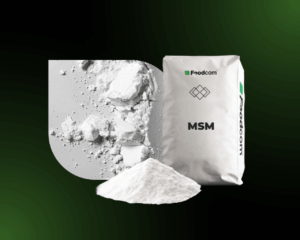
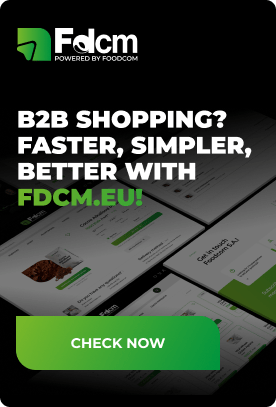
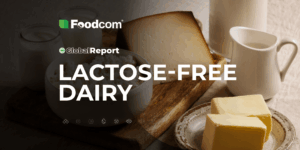
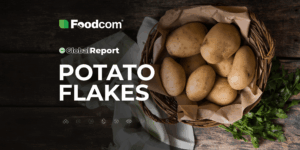
![Przegląd rynku laktozy w 2024 [Global Report] Przegląd rynku laktozy w 2024 [Global Report]](https://foodcom.pl/wp-content/uploads/2024/12/creatine-na-bloga-300x150.png)
